December 23, 2015
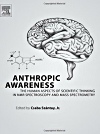
by Csaba Szantay Jr
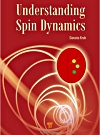
by Danuta Kruk
| Two new NMR books
Since a few weeks, two interesting NMR books reached the bookshelves. They cover a very broad range of NMR, from the lofty heights of quantum uncertainties, to elucidation of molecular structure elucidation, and to an advanced exposition of spin dynamics and relaxation principles. You might have already noticed the two books in the right column of this blog. A few words about each:
Anthropic Awareness: The Human Aspects of Scientific Thinking in NMR Spectroscopy and Mass Spectroscopy (published by Elsevier, 390+ pages) is a collection of contributions edited by Csaba Szántay, a Professor at Budapest University of Technology and Economics. Csaba contributed to the book himself, authoring six of the most lofty Chapters (lofty in the sense anticipated in the previous paragraph). Chapters titled like The Philosophy of Anthropic Awareness in Scientific Thinking: just what I would expect from my friend Csaba! He once made me pledge to read all the 129 pages of his 2007/8 saga about NMR and the Uncertainty Principle: How to and how not to interpret homogeneous line broadening and pulse nonselectivity, published in four parts (DOI 10.1002/cmr.a.20098, 10.1002/cmr.a.20102, 10.1002/cmr.a.20116, 10.1002/cmr.a.20119) in Concepts in Magnetic Resonance. Seven years later, my anthropic awareness is still aching!
But don't get misled by my kidding. Have a look at the Table of Contents and you will see that there is interesting stuff for everybody. The book has 15 Chapters and covers also a lot of very practical terrain concerning elucidation of NMR spectra of pharma-sized molecules, with an eye on computer-aided approaches. That is directly pertinent to my bread-and-butter activities, so as soon as I got a word about the book, I planned on buying it. Not immediately, though: at $191 ($110 for the Kindle reader), it was too costly for me just before Xmas. But apparently I have a friend at North Pole - I got it today as a Xmas gift! Which means that I will be able to tell you soon what is the connection between Anthropic Awareness and NMR.
By the way, the book seems to be a kind of Hungarian affair since the ten Contributors are all Hungarians, and all associated with the pharma company Gedeon Richter, except for one notable exception: Lars Hanson from the Danish Research Center for Magnetic Resonance. I wrote about Lars a bit critically some time ago, and later had an opportunity to talk with him, and appreciate his point of view. He is a good match to Csaba, in a way: his Chapter, titled The Ups and Downs of Classical and Quantum Formulations of Magnetic Resonance, probably reviews and details his opinion that basic descriptions of NMR phenomena for MR operators can (and should) be kept classical. Again, I will be able to say more once I have read it.
Understanding Spin Dynamics (published by Pan Stanford, 250+ pages) is a comprehensive, in-depth exposition of magnetic resonance relaxometry (MRR) by Danuta Kruk, now an associate Professor at the University of Warmia and Mazury in Olsztyn, Poland, and one of the rather rare world-class experts in MRR theory. This is the second book written by Danuta, at least as far as I know. It looks as a no-compromise tome that, in 12 Chapters, reviews practically the whole field. I have not (yet) read it but, knowing Danuta, I am absolutely sure that it is very readable (despite her being a mathematician :-) and that for a long time it will be a must for everybody wanting to do in earnest anything involving MRR phenomena. At less than $75 it is an excellent buy.
By the way, Danuta is now organizing the European Network on NMR Relaxometry, cast as a European COST project (open call OC-2015-2). Good luck!
|
December 17, 2015

| More about NMR smartphone Apps: Statusino
In my previous entry about NMR Apps for mobile devices, I have mentioned Statusino, but mangled the web pointers to it and its 'mother' Company Spektrino. Mateusz Urbañczyk, the Company vice-CEO, pointed it out to me (corrected). Being slightly confused about the new Company's products and about the Statusino itself, I have asked Mateusz for more details, and this is what he wrote to me:
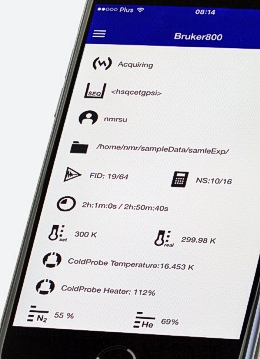
Dear Stan, ... As an NMR spectroscopist often running lengthy experiments, I was always a bit worried about spectrometer stability. However, checking parameters remotely by VNC connection is not always convenient (and, as a two-way protocol, not always safe!). Therefore, I've decided to create smartphone app that could do it better. This idea later developed into Statusino app.
Currently, Statusino shows the status of the spectrometer for both Agilent and Bruker machines. It is implemented as iPhone and Android application and it works also from a web-browser. It provides may parameters like: Acquisition status, pulse sequence, sample information, number of acquired FID and scans, time to the end of experiments, cryoprobe status, cryogenics levels and many more.
To avoid possible problems with firewall configuration, Statusino is using standard web protocols to report the status. The subscription to the service is paid annually (price depends on number of spectrometers, not users). We offer one-month free trial.
It looks to me that this is one little great App that falls in line with the current IoT (Internet of Things) developments, and does it in an intelligent way, which, more often than not, is not yet the case with IoT. I am sure that Statusino can also ring an alarm when the field lock has fallen, or when the sample temperature got wrong. Mateusz did not mention it, but the price for a single spectrometer (the highest) works out to be less than 5 euro/month which makes it certainly convenient.
The only remaining question I have is whether Statusino could support also Jeol instruments, and what are the reasons for the omission of Jeol from the Statusino compatibility list. If the reason is just a lack of access to a Jeol spectrometer, that could be taken care of. The same might apply also to spectrometers from other makers; after all, making a device the size of any NMR instrument a part of IoT will soon become a necessity, not an option.
By the way, Mateusz is a member of the Laboratory of NMR Spectroscopy at the Centre of New Technologies in Warsaw (Poland). The highly active group is where much of the NUS (non-uniform and sparse data sampling) ideas and methodology has been developed. Spektrino, as a spin-off Company, offers also help with the algorithms the group is developing for NUS in particular, and for multi-dimensional data evaluation techniques in general. That, however, is independent of Statusino - a fact that originally confused me a bit (which means nothing, because I am one who gets confused very easily).
|
December 10, 2015
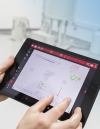
Mobile NMR Apps
| NMR software for mobile devices
It was unavoidable that NMR software applications would make the jump from desktop and laptop computers to mobile devices. It was just not clear when, and now we know: in 2015!
In 2013 and 2014, there were already some early-bird harbingers, like Touch NMR from Dr. Kaka for basic NMR data processing (free, but copyrighted by Xiamen University), Orange NMR from Kirill Blinov for predictions of NMR parameters (per-prediction low-cost royalties), and Statusino from Mateusz Urbanczyk's Spektrino for remote spectrometer status monitoring and some data evaluation.
I would like to write in much more detail about all these initiatives, but I need more input on them. If you have tried them out, tell me what you think and I will pass it on.
A mobile commercial software of some weight fully focused on NMR and capable to elaborate experimental data from any existing spectrometer took a bit more time. It was launched last Summer by Mestrelab Research under the name Mnova Tablet, and it is based on the popular Mnova package as its 'mother' application. Being one of those rare outcasts who boycott mobile devices, I have not tested it myself, but rather interviewed Carlos Cobas (the President of Mestrelab Research) to get some details. Here is what he told me:
The Mnova Tablet incorporates a large chunk of the desktop Mnova core, doing all the basic processing, as well as some of the more advanced one (provided you buy the license). You can download the App either from the Google Play store (for Android platforms, including Android 6) or from App Store (for iOS ≥ 6.0, compatible with iPad). In both cases, the download is free, and the free version remains operative even if, after 30 days, you do not opt to buy the license (which costs only about $25).
The difference between having a licence or not having it is simple: a licenced User can do a lot of basic NMR data processing, covering practically all the 'traditional' spectroscopic data manipulation tasks, and exploiting a number of cute graphic processing User interface features, designed specifically to view spectroscopic data. We are quite proud, for example, of the 'cross-hair' mode, which makes possible to perform, with one single command, many operations like zoom-in, integration, peak picking, multiplet analysis. This is an example screen shot:
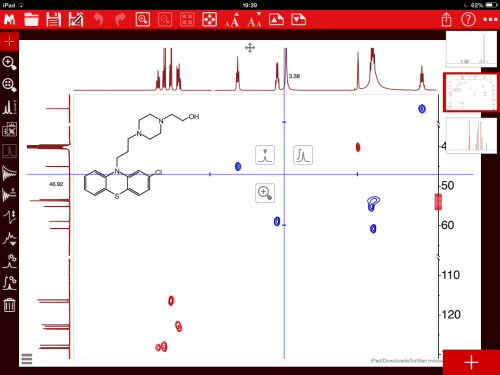
When you do not buy the license, the processing capabilities get reduced to automatic pre-processing (apodization, FT, phasing) and a 'basic-viewing' User interface. [Stan's note: the exact divide is not too clear to me, but I am sure that it will be anyway subject to constant evolution].
However, even when you have only the free version, you can still use it as a universal NMR data reader & viewer. In can import and display data generated by virtually any existing spectrometer (Bruker, Jeol, Varian/Agilent, as well as those from all the emerging bench-top NMR instruments). Plus, it can read and display any Mnova documents, even if they contain desktop Mnova features that cannot be created directly with the Tablet version (example: auto-assignments).
The Tablet supports data from both 1D and 2D experiments, arrayed experiments, and even NUS (non-uniformely sampled) 2D data!
With Mnova Tablet, sharing NMR spectra becomes also very easy, be it via email, social networks, dropbox, or whatever else you name (naturally, it exports the NMR spectra in many different formats: PDF, PNG, etc.).
What can I, as a blog editor, say more:
It seems to me that a software like this one is great when it comes to networking the NMR World. The practical usefulness is self-evident: A desktop Mnova user can store the results of his/her work on a mobile device to be presented and/or shared at any time, anywhere. And a student can easily view and manipulate NMR spectra coming from any source.
Indeed, in my view, the educational potential of software's like the Mnova Tablet is enormous and could play a crucial role in coming years, especially, but not only, in developing Countries.
|
September 26, 2015
| A healthy surge in new NMR books
Until about the year 2000, new NMR books (excluding EPR and MRI) used to appear at the rate of 10-13 per year, but then the numbers started climbing. If you consult my complete list of NMR books ever published (presently 735, plus over 100 in periodic series), you will see that this year's count is heading beyond 20, plus at least 5 which contain large NMR sections or are closely related. Moreover, only two of the books are reprints of older editions, and the new titles cover a broader-than-usual range of topics (technical, methodological, classical & novel applications, ...).
The steady rise in NMR publishing activity is interesting because (i) it does not show any negative effect of the 2008-9 economic recession, and (ii) it contradicts the gloomy market situation described by some equipment manufacturers. Judging just from the numbers of new titles, NMR looks more vigorous than ever.
In the past I was trying to say a few words about every new book, even if just glimpsed from other rewiews and from the table of contents. However, the numbers are becoming too large even for such cursory reviews. Take a look at the NMR books page mentioned above, or at the entries shown in the right column of this page, and consult the Amazon pages to which I link.
|
September 24, 2015
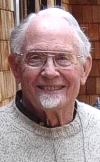
Jim Shoolery
| Demise of James Nelson Shoolery
I was averted last night by an e-mail from Bill Reynolds that Jim Shoolery has passed away. This is the full text of Bill's missive:
Dear Stan, I just heard from Judy Shoolery that Jim Shoolery died this morning after a lengthy illness. He was 90. In my opinion, he did more than anyone else to popularize NMR among chemists. Certainly, his lead role in developing the Varian A-60 was a key factor since that was the first spectrometer that a non-expert could easily use. With Jim's death, I guess that Wes [Weston] Anderson and Martin Packard are the only surviving Varian NMR pioneers.
Yes, I certainly agree with Bill. Though there were in the 50's and 60's many distinguished contributors to the exploding discipline of Magnetic Resonance, nobody has done as much as Jim in spreading the knowledge of NMR among chemists and showing them how to use the technique to elucidate molecular structures, as well as tackle analytical problems. In addition, he has done so in an extremely affable way, collecting friends all over the World (including places such as communist Czechoslovakia and Soviet Union). If I were to coin a fitting one-line epitaph for him, I would say that
Jim was a gentle and tireless Apostle of NMR in the pagan lands of the Chemists.
I am therefore glad that he and his wife Judith allowed me a few years ago to re-publish his memorable booklet A Basic Guide to NMR.
Since this nice introductory text is even today a great help for chemistry students approaching NMR for the first time, I like to think, and hope, that in this way I am helping Jim's work to transcend its time.
I would like to place here also a link to a YouTube video in which Jim and Emery Rogers discuss the creation of an NMR Applications Lab. There is a direct link between Jim and the fact that today most scientific instrumentation manufacturers maintain an Applications Lab staffed by scienists rather than engineers. He established the concept in 1952 and, without much ado about it, just by setting up and running such a lab, made it absolutely clear how useful it was to all parties involved, from the manufacturer to the end User. We often forget that most of the things we take for granted, are not granted at all; somebody had to invent them.
Last note: I have just returned from this year's edition of the fine international meeting SMASH (Small Molecules Are Still Hot) which has in 2014 established the James N. Shoolery Award. This year the Award went to Prof. Gareth Morris (Uni Manchester), a distinguished senior NMR spectroscopist, who delivered his excellent award presentation on September 21.
|
April 8, 2015

| Victor J.Bartuska, co-founder of ex-Chemagnetics, died
From a post by David H.Lewis on the LinkedIn group Solid State NMR I gather that Victor Bartuska has died on 22 March 2015. Together with late Gary Maciel, he has founded in 1979 Chemagnetics Inc, a US NMR company based in Fort Collins, Colorado, which reached a considerable importance between late 80's and early 90's. They started by building MAS probes, then a real novelty, and later moved into full-size FT-NMR spectroscopy, particularly geared for HR solid state of heteronuclei (13C, 29Si, and others). The total number of full-size installations reached several tens, I believe, located mostly in North America. At some point, US articles about NMR regularly listed Varian Associates, then Chemagnetics, and only afterwards other Companies such as Bruker, Perkin-Elmer, and Jeol.
Victor and Gary sold Chemagnetics in 1994 to the US branch of Otsuka Electronics, a Japanese corporation, which kept it operating under its original name until 1997, when it was purchased by Varian Associates. The trademark disappeared, I believe, after the 1999 split of Varian Associates into two companies. What used to be Chemagnetics, including several engineers, went on within Varian Inc. With the 2009 acquisition of Varian Inc by Agilent, and the 2014 dismissal of NMR by the latter, the last traces of Chemagnetics became history.
Victor Bartuska authored three patents and at least a dozen of NMR papers, mostly concerned with practical applications, such as in coal and cellulose industry. The first studies of coal by CP-MAS 13C spectroscopy, for example, can be tracked to him. For me, Chemagnetics is memorable because, as far as I know, they pioneered the first digital NMR receivers and, unlike several Companies which tackled the problem later, they got it right, with no digital-filter artifacts like group delays, smileys, and brownies. That design was patented by Varian Inc and survived in Varian direct-detection receivers (DDR) until the last days of Varian-Agilent in 2014.
I met Victor only once, at a Rocky Mountains Conference around 1988. Chemagnetics had a stand there, and I, then a Stelar co-owner, was also an exhibitor. Victor passed one day by the Chemagnetics booth, dressed in a markedly informal way (a great sports jacket), greeted his very formally attired CEO, and was about to leave when I got hold of him. We had a beer and kind of wrestled about politics. He was born in the USA in a family of Czech immigrants, but he had some weirdly distorted views about what Czechoslovakia (my own birth Country) was in 1980's. He kind of thought Czechs were 'maintained' by the Russians, rather than being 'exploited'! Amazing! :-) That is practically all I knew about him until more recently, when I started putting together casual remarks from people who knew him better.
What I wrote above might contains inaccuracies. If so, I would much appreciate corrections, and also welcome a photo of Victor, and/or of a Chemagnetics installation. Even more welcome, for the whole NMR community, would be a first-hand account by an ex-Chemagnetics guy, summing up this part of US NMR history before it gets completely lost.
|
April 3, 2015
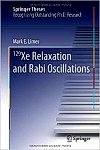
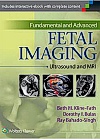
| Two new books: Prepolarized 129Xe-NMR, and a Fetal Imaging tome
Two MR books became available:
One is very physical, even technological, and deals primarily with the production, transporation, handling, and some MR applications of 129Xe. Its title is 129Xe Relaxation and Rabi Oscillations and it stems from a PhD Thesis of Mark E. Limes (Princeton University), published by Springer in their [Distinguished] Theses series. Do not get misled by the title: though it is clearly a thesis written by a physicist with a lab technologist in mind, it contains considerable amounts of details about the fascinating world of xenon NMR (I should write a separate entry about that one). If you plan to use Xe for any kind of NMR investigation, you will inevitably end up with the idea of pre-polarizing it by means of optical pumping. Which is relatively simple, but it is a very specialized topic, most likely not in the focus of your own research, and there is nobody selling commercial 129Xe pre-polarizers (another fact to return to). In this case, the best way to start is by buying this book.
Regarding the possibly misleading title: First, the book is not concerned only with 129Xe relaxation. Second, the mention of the somewhat unusual term Rabi oscillations refers to the phenomenon of periodic transfer of energy between two relatively weakly interacting quantum systems - the same one which a typical NMR spectroscopist knows very well as polarization transfer.
The second book regards imaging of the human fetus. Titled Fundamental and Advanced Fetal Imaging: Ultrasound and MRI, it was written by Beth Kline-Fath, Dorothy Bulas, and Ray Bahado-Singh, and published by Wolters Kluwer. It is costly but, according to reviews, extremely competent. And there is also a Kindle edition.
|
April 1, 2015
| Breaking News: The End of Spin ... and of The Universe
The elusive but World-class research institution known only as "TUBO" has just released the results of a decades long study. To understand those findings, consider first this: in the quantum world, continuous transitions between physical states of a system are not allowed. Instead, there are instantaneous transitions between discrete states, occurring with a mean probability matching what the classical picture would dictate. The instants when a transition happens are unpredictable (trivial example: individual instances of a spontaneous radioactive nuclear decay). In the case of angular momentum (spin), the classical picture admits only systems whose angular momentum can change continuously. When left alone, a classical system keeps losing its rotational energy until a complete stop. Not so in the quantum picture, however. The quantized spin can not wind down like that!
But is the quantum spin ethernal? According to what was said above, it is not! For any system (particle or nuclide), it is bound to eventually - and suddenly - jump down to a lower spin, with spin 0 being the final one. In a trillion years, maybe ...
So far the obvious. The amazing finding of TUBO is that the sudden loss of spin will happen simultaneously in the whole Universe, and for all physical systems. Simultaneously in the sense of Einstein's theory of General Relativity, that is. Starting at that very moment, denoted tBC (start of Big Crunch), all fermions will cease to exist, converted to bosons. Pauli exclusion principle will become inapplicable, ineffective, and irrelevant. Consequently, matter will start collapsing everywhere, with nothing at all to counter the process.
Needles to say, Magnetic Resonance will be the first scientific discipline to go extinct ...
It is now proved, we just don't know on which year's First of April will it happen.
|
March 29, 2015
COMMENTS: 3
| Europe's NMR spectroscopy above 1 GHz
About a month ago I have started a discussion entitled "Who owns, or ordered, a >= 1GHz NMR spectrometer?" on the LinkedIn Group Magnetic Resonance Research Network. The Group has over 4800 members, but it is nevertheless classified as "private". I therefore want to copy my own conclusions from that discussion here, with only minor edits:
It looks like this thread is coming to an end. We (mostly thanks to the links collected by Bert Heise of Spin-Doc) have established several facts, I think:
(1) Apart from Bruker, there does not seem to be anybody else developing a mere 1 GHz magnet. The fact that for Bruker 1 GHz is a 'catalog product' probably makes a non-Bruker, independent development less attractive.
(2) 1.3 and 1.5 GHz magnets are under development in a couple of public Institutions in the US, but appear to be still far from usable.
(3) Since 600 MHz is the current upper limit for Jeol/Jastec, Bruker is presently the undisputed world-wide commercial monopolist above that field strength.
(4) Bruker is accepting orders for 1.2 GHz systems. They probably have in-house an energized prototype, or even prototypes; in fact, I heard rumors to that effect already 2 years ago. Nothing much is known about the specs of such magnets (persistency, MTBQ - the mean time before quench, helium consumption, etc), neither the currently verified ones, nor those expected after delivery.
(5) World-wide, at least 7 (maybe more) 1.2 GHz systems were actually ordered and are slated for delivery and installation between 2015 and 2018, all of them in Europe (links: Frankfurt, Göttingen, Munich, and Jülich, all in Germany, Utrecht in Netherlands, Birmingham in UK, and Florence in Italy).
(6) The heavily, and curiously, unbalanced World distribution of the ordered systems looks 'suspicious', but one must take into account that most of the 1.2 GHz orders are for the super-national EU Large Scale Facilities and similar Centres, basically controlled by the same Commission in Brussels, so they can not be counted as truly independet orders (they appear as such at first sight, but I do not believe they are).
(7) The decision to endow a significant portion of pan-European facilities by 1.2 GHz NMR's might be correct, I do not know; I just wish that there were more public discussions of such EU decisions.
(8) Though the standing orders imply a total cost around $150M, it is actually trifle compared with total LSF's running costs. It is also not too much for the Bruker Group whose yearly revenue is 12 times bigger. If, on the technical side, everything goes well with the installations and the cycle will be completed in 3 years, it will boost Bruker sales by about 2.5% per year - a short-term blessing, but not a big one.
Additional notes:
- Installed and operative >=1.0 GHz spectrometers: To my knowledge, there are two successfully operating 1.0 GHz spectrometers: one in Lyon, France, and one in Bayreuth, Germany. The purchase of a 1.1 GHz system at ETH in Zürich, Switzerland, was announced, but the current status of this project is not clear.
- Pricewise, a 1.2 GHz NMR instrument weighs as about ten 800 MHz instruments.
- In the US, quite a few people are bewildered and getting worried, asking whether they are not missing something. See this Community letter to NRC.
- Above, I use [Hz] as magnetic field units (1H Larmor frequencey). As everybody knows, the conversion factor is 42.576388 MHz per Tesla, so that 1.2 GHz corresponds to 28.184636 T. My apologies to the magnet guys.
COMMENTS:
29 March 2015, Tweets between Christian Fernandez and Olivier Lafon, Uni Lille:
Christian: I think Lille, France, is also ordering 1.2 MHz, right?
Olivier: Yes, CNRS has also ordered a 1.2 GHz NMR. It will be installed in Lille and will be a national facility.
30 March 2015, Stan
There are rumors that Jeol is also working on a really high-field magnet. I believe that they stem mostly (there might be more going on) from the recent JMR article signed by 13 authors from 6 different Japanese institutions (including RIKEN) and Companies (including Jeol). It is a kind of high-quality work-in-progress report, nothing imminent, but very serious. It is pertinent to this discussion, since the second part of its long title says: "Towards an ultra-compact super-high field NMR spectrometer operated beyond 1 GHz". Judge yourself; this is the DOI: 10.1016/j.jmr.2014.10.006.
One never knows; it might yet happen that in the next 10 years the price of a 1.2 GHz instrument might drop by an order of magnitude. Which means that the coming European installations should better start producing results very soon, before becoming obsolete.
31 March 2015, Stan
Sorry to keep commenting my own entries, but there are things that baffle me. And I have a few more links that might be of interest. One thing is this weird global picture: we have Bruker, now a 100% US company, who has pocketed standing orders for at least eight 1.2 GHz NMR spectrometers, all of them from Europe, and all destined to the sprawling public European research infrastructure specializing in NMR of proteins. Not a single one elsewhere. At the same time Europe maintains large public research facilities (in Dresden, Grenoble, Nijmegen, and Toulouse) for the development of high magnetic fields which are open to everybody (see European Magnetic Field Laboratory), with an operative 33 T (over 1.4 GHz) NMR spectrometer in Nijmegen, Netherlands. Yet these two "circuits" appear to be disconnected, oblivious of each other. Does that make sense?
Another point: in 2009 I and Chris Spronk were discussing on this blog whether proteins were still in the forefront of NMR research. My feeling was that protein structure determination was becoming a routine and, with all the refinements implemented over decades, could be handled well on 800-900 MHz machines. Of course, who am I, a physicist, with my personal impressions! But read carefully this 2010 Nature magazine editorial written by Ananyo Bhattacharya, Nature news Editor, after an interview with Lyndon Emsley, Head of the CNRS Lyon laboratory hosting the world's first commercial 1.0 GHz spectrometer. Ananyo writes: '... There are still questions about whether the increase in field strength is worth the cost. Most NMR spectroscopy work doesn't require such large magnetic fields. Many protein structures can easily be deciphered at field strengths of less than 800 MHz ...' and '... but Jeremy Nicholson of Imperial College London says that grant-giving agencies may be losing interest in protein NMR spectroscopy. "It has been very successful in discovering the structures of a lot of very interesting, important proteins," he says. "But very few of those discoveries have translated into anything that has made a big mark in medicine."'.
Taking in all this info - and then the sudden European avalanche of orders for 1.2 GHz spectrometers, worth 80 more modest ones - I keep feeling truly puzzled.
Bewildered, actually.
|
March 23, 2015
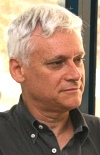
| Premature departure of Alessandro Bagno
A word has reached me that Alessandro Bagno, professor at University of Padova and Head of an NMR Group), has died prematurely (at 57, of infarct). It left me truly saddened. I got to know him only relatively late, but our contacts were intensifying during the last years.
Alessandro was one of the few Italian experts on ab-initio DFT calculations of NMR parameters (chemical shifts and J-coupling constants). For me, contacts with Alessandro started when I got interested in "predictions" of NMR parameters as inputs for what I am doing lately with Mestrelab. I had many questions and he was very good at answering them. We have first met socially as lecturers at the GIDRM Advanced NMR Course in 2007 in Torino, where he presented a very clear review of the current status of ab-initio NMR predictions in "normal" diamagnetic molecules, based on his seeding 2001 paper (Chem. Eur. J. 7, 1652-1661). I can also hardly count the number of times I have studied the paper he and his colleagues Federico Rastrelli and Giacomo Saielli published in 2006 and, in particular, pored over the predicted values in strychnine (shown below, just to give you an idea of how far these computational chemistry techniques got). In the last few years, Alessandro moved into ab-initio computations of the apparently totally irregular chemical shifts in paramagnetic molecules. Those can be really huge (up to thousands of ppm for protons) and are therefore of interest, among others, to people who wonder about NMR applications in really low magnetic fields (see the second Figure). In this area Alessandro had ongoing international collaborations, most notably with Alex Pines at Berkeley (yes, he was a "pinut").
Last year in May we met at NMR Valtice in Moravia (in Czech) where he presented his recent work, and where we had an opportunity to talk at length during a 10 km cross-country hike. We talked a bit about Italian politics - he was keenly interested in helping to halt the Italian decline. But mostly we talked about Science. He got me interested in simulating nuclear spectra of strongly coupled paramagnetic systems in low fields, where the high-field approximation can no longer be applied and the computations become exceedingly hard. We decided to do something together along this line - and now he departed for good, leaving me with a bad conscience because I have not finished anything yet ...
It is so bad when these things halt in mid-stride a rich life full of plans and interests!
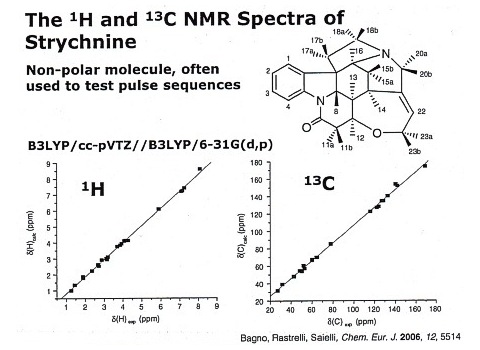
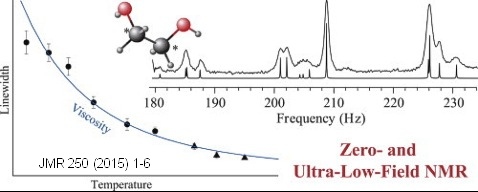
|
February 19, 2015
| GE ordered by FDA to recall nearly 13'000 MRI scanners!
Yesterday the U.S. Food and Drug Administration (FDA) issued a Class 1 Recall order on almost 13000 General Electric (GE) MRI scanners of a staggering number of types installed in the USA. Class 1 recall is the most severe one, indicating a lethal danger.
The order apparently regards units which have a separate, self-standing Magnetic Rundown Unit (MRU) which can be switched OFF. It is not yet clear how the actual "recall" will be managed, nor what impact might the order have on yet unlisted scanner types and/or those produced by other manufacturers. Nor is it clear what will be its impact on MR sites outside of the US.
The story behind the recall seem to be this: there was a mortal accident in which a large magnetic object was drawn into a magnet, seriously hurting the patient, and obstructing access. Since the MRU unit was disconnected, it could not be used to run down the magnetic field in order to clear the magnet entrance. Prevented from receiving first aid, the patient died.
This raises several questions:
- Do vendors inform local technicians stringently enough that the MRU must stay always connected?
- Why the managers of so many MR sites so often disconnect the MRU's anyway?
- Why, if the MRU must stay connected, are the scanners not designed so as to prevent normal clinical use unless the MRU is attached, operational, and tested.
Technically, that would seem to be the most obvious precaution.
It is not likely that the installed scanners will be really "recalled". The solution might consist in just issuing a strict order to all MR site managers to keep the MRU's operative all the time, and test them on some regular basis. The best solution, it seems to me, might be a relatively minor, but important, in-place upgrade of all the scanners indicated by the FDA.
The total number of installed GE MRI scanners in the U.S. is over 19600, and there are over 9500 more outside the US. At this moment it is not clear (to me, at least) how are other manufacturers/vendors handling this safety aspect. I will investigate.
The photo below gives a clear idea about what we are talking about. Imagine a patient trapped inside the magnet and nobody knowing what to do because the "panic" button ... OOPS! ... does not work.
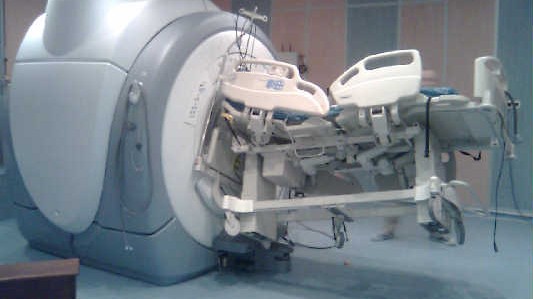
This photo was borrowed from MRI Metal Detector blog. Among other places concerned with MRI safety, see Frank Shellock's website.
|
February 18, 2015
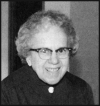
Sister Celine
| Spin Systems, Math Theorems, Sister Celine, and Machine Proofs
In 2007, I wrote an article about a combinatorial identity, which kind of popped-out from my NMR musings, and which I considered novel. Naturally, nobody cared much about it which, to be sincere, I have expected - and reciprocated, kind of. As often happens, I have published it in Stan's LIBRARY, but also subjected it preventively to an informal peer review. As a result, I got a dense flak from mathematicians, basically pointing out that the proof could have been done automatically by of those symbolic math software packages, avoiding my dirty application-oriented approaches based on counting p-quantum transitions in NMR systems of spin-1/2 transitions or, alternatively, on strings of symbols "0" and "1". They did not show any love of NMR at all!
In this case, the suggested computer proofs are based on the time-honored Sister Celine's method. They certainly work; there is a nice book about it, written by Petkovsek, Wilf and Zeilberger and titled just A = B (it is also available online). The automated-proof techniques embrace a whole math jungle inhabited by hundreds of combinatorial theorems.
As I wrote in the revised version of the article, however, they leave you with a bitter after-taste: you know that an expression holds, but you do not really know why (behold the brave new math World!), nor do you gain any convincing feeling about why it should work. Once you have a probable identity, the machine-proof methods will tell you whether it holds or not - but you must have it first, and that does not happen spontaneously. You cannot just recline on a coach and wait until an identity materializes in your head! For these reasons, I prefer what mathematicians call a "model" for any particular identity, and if the model can be drawn from an NMR context, that makes me even happier.
A reason why I am digging this up, however, is a recent blog entry of mine, entitled Magnetic Resonance on OEIS. There, I have promised some explanations and, not having enough time to do so right now, the old article can help to, at least, introduce the context.
BTW, this is the identity, with C(n,k) denoting the binomial coefficients:

It expresses the total number of p-quantum transitions N(n,p) in a spin system composed of n coupled spin-1/2 nuclei.
|
January 31, 2015
COMMENTS: 2

MR fast sepsis
analyzer T2Dx
| Table-top NMR diagnoses sepsis fast enough to save lives
It is quite rare that IEEE Spectrum - the prestigious news magazine of the Institute of Electrical and Electronics Engineers, would write about magnetic resonance (except, occasionaly, about MRI). Yet in the last issue it did (January 2015, page 19), though somewhat indirectly.
The article regards a Massachussets company T2Biosystems which IEEE defines as a start-up. They produce a table top instrument not larger than a medium-size home printer, T2Dx, which can diagnose various types of bacterial sepsis in the blood of a hospitalized patient in 3-5 hours instead of 1-2 days, a time difference which can often literally mean death or life. It may sound surprizing, but even in the USA, sepsis is among the major causes of death among hospitalized post-traumatic and post-surgery patients. It is still a major clinical issue.
One must read the fine print of the IEEE article to realize that T2Dx is an NMR time-domain instrument. It contains a very small but very performant magnet developed years ago by Eiichi Fukushima and his collegues at a small New Mexico company ABQMR (they initially called the magnet and the NMR system build around it NanoMR). To detect the sepsis bacteria and discriminate between their different strains, T2Biosystems eploits relaxation effects due to magnetic nano-particles coated by a biochemically active layer.
What got me excited when I spotted the IEEE article was that I wrote about the development already over 6 years ago, under the heading The smallest NMR ever built. You might therefore wonder, perhaps, why IEEE still defines T2Biosystems as a start-up, and what has taken them so long to get on the market. One reason is, I think, that the application requires a combination of several different technologies, of which the NMR part was, possibly, the one resolved early. Another aspect are field tests and FDA approvals. T2Biosystems tested their method on 1500 patients at 7 hospitals! After that, they got the FDA rubber stamp in a record time, IEEE says, because with T2Dx the mortality rate of septic infections dropped from 40 to 11 percent. A study like that cannot be done overnight! In any case, they are now ready to go, with the 2015 revenue target sat at 35 M$ - and thousands of saved lives. Thumbs up!
COMMENTS:
9 February 2015, Eiichi Fukushima
Hi Stan,
Just saw your blog about T2Biosystems. I tried the link to the article and it did not work so I went to the Spectrum site and found the article by Prachi Patel, posted 23 Dec 2014. You might want to change the link.
Thank you for giving us credit for the magnet but I do not believe they use the same magnet we used. I'm sure they need more sample than our magnet did but can check with people who are more familiar with what they are doing -- I am not. Also, nanoMR was a company that was formed to license our technology -- and wrote about it in a couple of articles like in the 2008 Appl. Magn. Reson. article (Vol.35, pp.185-195, DOI 10.1007/s00723-008-0151-3) -- but they did not follow up the NMR development. They elected to pursue the immunochemistry of labeling, instead, and just (2 weeks ago) got bought out by a British company called DNAElectronics [...]
By the way, Andrew McDowell who invented the technology that was licensed to nanoMR left us a few years ago and is working on his own, still in Albuquerque, as NuevoMR, LLC. He is on LinkedIn; I need to ask him if he has anything else out in cyberspace.
Anyway, it is good to see that you and the blog are still active. Our activities have turned in a new direction; I have spent much of my energy recently on a large-scale Earth's field NMR project for detecting oil spills in the Arctic, something I never thought I'd do.
More on that later. Best wishes, Eiichi
17 February 2015, Stan
Eiichi, I have corrected the link (thanks), but you left me with my mouth wide open.
First, told by you, the T2Biosystems story sounds much different, and more real. Let me point out that nanoMR was sold for 24 M$; it could stimulate a potential start-up hesitating whether to move into some "funny" NMR. It also illustrates what I am preaching since some time now: what really counts are the applications, while NMR as such is just a tool.
Second, though I am well aware of your pioneering mountain climbing in the Antarctica, your new Arctic NMR interests really beat me. You are an amazing guy!
I am looking forward to any update.
|
January 25, 2015
COMMENTS: 2

John Sidles,
the great guy
who started it
| Detection of a single nuclear-spin announced ... and retracted
A micro-story of MRFM nano-imaging, including a recent hiccup.
From the very beginning of Magnetic Resonance Imaging [1], there emerged an interest in pushing its limits towards the highest possible resolution. It became soon clear that the "classical" MRI set-up had severe resolution limits which would be hard to beat due to limited sensitivity (typically, the smallest number of nuclei an inductive sensor can detect is about 10^12). A different technology was needed.
Starting from a seeding 1991 paper [2] by John Sidles from Univerity of Washington, Seattle, a group of researchers and engineers at IBM, led by Daniel Rugar, tried to apply to spins a detection method known as MFM (Magnetic Force Microscopy). MFM uses the mechanical resonance of nano-sized, vibrating cantilevers, a nano-technology capable to detect extremely tiny forces (there is nothing that beats it). In their nice 1995 review [3], Sidles has named the new MFM-based MR technique MRFM (Magnetic Resonance Force Microscopy).
With this new technology, the Sidles - Rugar group started pushing down the minimum number of detectable spins. There was a rapid series of successes, with microscopic images of biological cell structures, viruses, and the like. Finally, in 2004, there came an exciting announcement [4] of the first detection of a single electron spin. The clever experiment combined cantilever detection with a magnetic field, a pulsed ESR micro-spectrometer, and an ingenious pulse sequence, all designed to make sure that what was detected was indeed a single electron spin. A true jewel of science and engineering!
That achievement started a "race" towards the detection of a single nuclear (not electron) spin. That, of course, is a much bigger challenge. Since electron magnetic moment is over 658 times larger than that or proton, and since the sensitivity of this type of sensors increases roughly with the square of the magnetic moment, a single electron beats in terms of sensitivity more than 400'000 protons! But the fata morgana of nuclear spin imaging at nanometer scale is a strong attractor. If it could be done, structural analysis of molecules would change dramatically: in principle, we could produce 3D images of individual molecules in all their complexity!
Naturally, the experiments of the Sidles - Rugar group were repeated by others. This brings us to the 2005 Thesis of Christian Degen [5]. Though it is oriented towards nano-scale MRMF spectroscopy (implying many spins), it is pertinent also to our topic. It gave rise to a group led by Christian Degen and Kai Ebenhardt at the ETH in Zurich. They did fine job on improving the sensitivity in 2007 [6] and applied their MRFM setup to 1D and 2D spectroscopy in 2008 [7]. In the 2007 experiment they were able to detect a very sharp "ridge" of 19F nuclear spin magnetization, produced by MRI techniques, in a single crystal of CaF2 and "image" it with a resolution better than 10 nm. Not only that: they were actually able to monitor the spreading of the edge due to the spin-diffusion phenomenon and estimate the spin-diffusion rate, which turned out to be in full agreement with previous, indirect methods. A lovely paper which is today carved in stone in the MR Valhalla.
It is not easy to estimate how many 19F spins were involved in the experiment; the linear resolution being about 10 nm, the count boils down to something around 1000, give or take a factor of 5. Some optimistic estimates of detectability I have heard around 2010 [verbal communications] were as low as 50 - 200 spins.
Again, all these achievements were reproduced elsewhere and a lot of impressive results were obtained. See, for example, the top-quality Review of reference [8].
Then, in October 2014, just 3 months ago, came an announcement [9] from the ETH group that a single proton spin has been detected. In a very special system (diamond crystal with a nitrogen defect buried just under the surface, close to the proton to be detected) but, nevertheless, a single nuclide! Wow!!!
Unfortunately, something went wrong: the authors themselves, very honestly, pointed out a potential problem [10] and, a few days ago, retracted [11] the Science paper. The retraction says that the observed proton signal might have been confused with the 4th harmonic of 13C Larmor frequency (13C nuclides are of course abundant in diamond). The retraction leaves open a chance that, in one out of the three cases described in the paper, a single proton might have been indeed observed.
What can one say? An error, of course, can happen. It may be that the present-day academic pressure to publish fast is just too high. Especially when there are groups tackling the same targets by competing detection technologies such as, in this case, optically detected magnetic resonance (ODMR). A November 2014 ODMR paper [12], in fact, also claims to have detected a single proton. They use the same diamond surface with nitrogen defects, and similar pulsed RF excitation schemes; just the detector is different. Which makes me wonder: might not the reasons behind the retraction of the Degen's group be pertinent also to the ODMR paper?
Anyway, the single-proton MRMF detection milestone is presently lost in a fog, kind of.
Hence, rejoice, because the race is still on! But better do not rejoice for too long, I think.
Selected references:
- Lauterbur P.C., Image Formation by Induced Local Interactions: Examples Employing Nuclear Magnetic Resonance, Nature 242, 190 (1973). DOI 10.1038/242190a0.
- Sidles J.A., Noninductive detection of single-proton magnetic resonance, Appl.Phys.Lett., 58, 2854 (1991). DOI 10.1063/1.104757. The title of this seeding paper expresses the author's dreams, not an actual achievement.
- Sidles J.A., Garbini J.A., Bruland K.J., Rugar D., Züger O., Hoen S., Yannoni C.S., Magnetic Resonance Force Microscopy, Reviews of Modern Physics, 67, p.249-265 (1995). DOI 10.1103/RevModPhys.67.249.
- Rugar D., Budakian R., Mamin H.J., Chui B.W., Single Spin Detection by Magnetic Resonance Force Microscopy, Nature 430, 329-331 (2004). DOI 10.1038/nature02658.
- Degen C.L., Magnetic Resonance Force Microscopy: NMR Spectroscopy at the Micro- and Nano-Scale, Diss. ETH No. 16304 (2005). DOI 10.3929/ethz-a-005128707.
- Eberhardt K.W., Mouaziz S., Boero G., Brugger J., Meier B.H., Direct Observation of Nuclear Spin Diffusion in Real Space, Phys.Rev.Lett. 99, 227603 (2007). DOI 10.1103/PhysRevLett.99.227603.
- Eberhardt K.W, Degen C.L., Hunkeler A., Meier B.H, One- and Two-Dimensional NMR Spectroscopy with a Magnetic-Resonance Force Microscope, Angew. Chem. Int. Ed. 47, 8961 (2008). DOI 10.1002/anie.200802978
- Seppe Kuehn S., Hickman S.A., Marohn J.A., Advances in mechanical detection of magnetic resonance, J.Chem.Phys. 128, 052208 (2008). DOI 10.1063/1.2834737.
- Loretz M., Rosskopf T., Boss J.M., Pezzagna S., Meijer J., Degen C.L., Single-proton spin detection by diamond magnetometry, Science Express, October 16 (2014). DOI 10.1126/science.1259464.
- Loretz M., Boss J.M., Rosskopf T., Mamin H.J., Rugar D., Degen C.L., Spurious harmonic response of multipulse quantum sensing sequences, arXiv:1412.5768 (December 2014).
- Loretz M., Rosskopf T., Boss J.M., Pezzagna S., Meijer J., Degen C.L., Retraction, DOI 10.1126/science.347.6218.139-a.
- Sushkov A.O., Lovchinsky I., Chisholm N., Walsworth R.L., Park H., Lukin M.D., Magnetic Resonance Detection of Individual Proton Spins Using Quantum Reporters, Phys.Rev.Lett. 113, 197601 (November 2014). DOI 10.1103/PhysRevLett.113.197601.
COMMENTS:
25 January 2015, Stan. Sorry, I forgot a very useful MRFM review:
Suter A., The magnetic resonance force microscope, in Progress in Nuclear Magnetic Resonance Spectroscopy 45, 239-274 (2004). DOI 10.1016/j.pnmrs.2004.06.001.
3 February 2015, Stan
Errata: Christian Degen pointed out to me that their experiments, like the ODMR ones, are done at room temperature. In the original version of my article I have got it wrong, thinking that they were cry-cooling the detection assembly. To minimize any spread of inaccuracies, I have corrected the article text.
Christian also pointed out to me this pertinent link to the ETHzürich News & Events page:
Extremely high-resolution magnetic resonance imaging.
|
January 23, 2015
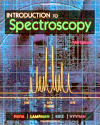
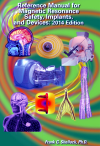
| New NMR/MRI books
The recent crops of NMR and MRI books are abundant and all the books would no doubt merit a few words. Let me point out at least two of them, for two different reasons:
The Introduction to Spectroscopy by Donald Pavia et al, could easily escape attention of NMR spectroscopists because it does not have "NMR" in its title. However, it dedicates full five Chapters (over 360 pages) to NMR spectroscopy, in addition to IR (infrared), MS (mass), and UV (ultraviolet) spectroscopies. It would be an excellent buy, I think, were it not so expensive, despite being presented as a textbook ($284 to buy, $66 to rent, and there is no Kindle edition). Anyway, if you can afford it, go ahead and give it a try. Especially if you need also an introduction to one of the other spectroscopies. The accent is on organic analytical chemistry aspects, though a fast introduction to physical principles is also given.
The 2014 edition of the popular Reference Manual for Magnetic Resonance Safety, Implants, and Devices, edited by Frank Shellock, is intended for MRI developers, manufacturers, site managers, as well as plain Users. Managers of in-vitro NMR facilities, however, can also learn a lot from it. I mention it here not because it is an unusual novelty (the Shellock safety manual has now become an almost periodical publication), but because safety is of paramaunt importance. A single lapse in safety can give a bad name to a whole facility or even to the whole trade. Price: $70. Again, an updated Kindle version would be appreciated, but it does not exist (yet).
|
January 11, 2015
COMMENTS:10
Older Entries:
May 2010
January 2010
July 2009
The
VARIAN Saga:
Varian brothers
Russell
(1898-1959)
Sigurd
(1901-1961)

IN: 1948
Varian
Associates
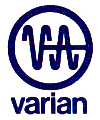
OUT: 1999
IN: 1999
Varian Inc

OUT: 2009
IN: 2009
Agilent
Technologies

OUT: 2014
R.I.P.
| A personal view of the state of NMR at the start of 2015
NMR is presently going through an unusual phase. For a number of reasons, and for the first time in history, traditional NMR spectroscopy is commercially unprofitable. It was totally abandoned by one major manufacturer, while others are anything but enthusiastic about it. At the same time, there are many new commercial ventures aimed at considerably different types of NMR instruments (compact, sub-compact, table-top, cryogen-free, portable, ex situ, ffc, ...).
The worrisome situation is limited to high-field NMR spectroscopy (HFNMRS) which was for many decades the staple of just three manufacturers: Varian (later Agilent), Bruker, and Jeol. It does not regard MRI, whose market keeps growing at a steep yearly rate of 11-12%. Sincerely, even in MRI, I do not think that the growth is a merit of innovation. My feeling is that, compared to three years ago, there is less talk about fNMR, spectroscopic MRI, molecular MRI, interventional MRI, diffusion and susceptibility imaging, or even just novel pulse sequences. Rather, the steady growth of MRI is driven by the fact that the majority of people on this planet still have only a very limited access to this important diagnostic tool. Even with limited innovation efforts, MRI is therefore enjoying a vast potential market. With current production capacity, any saturation of that market is out of question for 100 more years.
HFNMRS, on the opposite, faces a saturated market, mountains of used but recyclable hardware, and disenchanted manufacturers who have nearly forgotten the word "innovation" (indeed, I suspect that they might be dreading it).
Recent market reports show that between 2012 and 2014 the market for HFNMRS has slumped. The drop does not correlate much with the overall economy (it is true that Europe is in an economic quagmire, but USA are running strong, and some parts of the World are doing even better). Some explanations, apart from the European weakness, might be the following:
- In 2010 - 2011, many big Pharmas reduced their research facilities. Since, excepting academic NMR Centres, Pharmas represent the principle HFNMRS users, their crisis has dealt a sizable blow to that market.
- Many Pharmas pushed their downsizing as far as actually dismantling existing facilities (some with tens of NMR spectrometers per facility), sending lots of NMR hardware into the second-hand instrumentation market to compete with newly manufactured units.
- NMR as a structural-analysis chemical tool is no longer as prominent and unique as it used to be. Even though my friends among the chemists assure me that NMR is as highly considered as ever, it is evident that other analytical methods have made impressive advances. HFNMRS looks today as a mature technique, developing at a substantially slower rate than in the 80's when its innovation rate was peaking.
While the NMR market was slowing down, the principal manufacturers of HFNMRS equipment were (and some still are) facing other, more specific, challenges:
Agilent:
On October 14, 2014, Agilent Technologies have abruptly terminated all their NMR activities. The brusque, almost offensive, announcement came as a surprise even to most Agilent employees. Well, not all, perhaps. The eminent scientist Erics Kupce, for example, must have figured it out already by the end of 2012 because he resigned from a nominally excellent position at Agilent, effective January 1, 2013. But Agilent NMR guys in Italy, for example, were in the dark until the announcement.
Agilent entered NMR on July 27, 2009, by acquiring Varian Inc, the company born in 1999 from a split of Varian Associates. The latter, in turn, used to be a much studied textbook example of Silicon Valley industrial innovation capabilities in the post-WWII period (roughly up to 1975 - then it became more complicated). The Agilent's decision to drop NMR de-facto guillotined the last vestiges of a once glorious Chapter in NMR history.
It is ironic to think that in 2009 Agilent entered NMR at the sound of fanfares: they spent 1500 million dollars to acquire Varian, including its magnets production facility in Yarnton, UK, (ex Magnex), only to drop it all at a huge loss mere five years later! I was at the public grand open-house kick-off of new Agilent NMR premises (Santa Clara, April 8, 2011, prior to ENC). At the meeting, where historic personalities like Weston Anderson were present, American Chemical Society conferred to the would-be continuators of Varian traditions a plaque stating that the mythical A60 NMR spectrometer was declared a National Historic Chemical Landmark. There were bright talks, great buffet, and a lot of hype. However, the two questions that I fielded (how would Agilent handle the maintenance of the installed base of legacy Varian instruments, and how would Agilent react to the forthcoming helium crisis) were answered in a way that did not convince me.
My guess about why Agilent totally dropped NMR only 5.5 years after the merger:
- They declared to SEC, and therefore to their investors, that the 'merger' would cost 1500 M$, and that they 'expected a 20% return on it in 4-5 years'. After 5 years, instead, there was a large loss. Hence, since the takeover was no bleeding NMR heart operation, it was scrapped and written off as a deductible loss.
- The problem emerged just when Agilent was going through another internal crisis. The following announcement appeared on all their websites, starting at the same time as the NMR dismissal (it is still on most Agilent pages):
"As of November 1, 2014, Keysight Technologies, the division of Agilent Technologies that develops and sells electronic measurement (EM) products, will de-merge from the Agilent Technologies group into a separate publicly traded company, ..."
Now, Agilent's EM products were highly valued by electronic engineers worldwide. To thousands of electronics professionals, the term Agilent was simply equivalent to top-quality electronics-lab-instruments. I have realized myself only after I have seen the above announcements that this regarded just an acquired subdivision.
And Agilent was about to lose it!
- In those 5 years Agilent did not contribute any innovation worth mentioning to the ex-Varian products. They redesigned the closet on the DDR console, so that they could put the new logo on it and call it DDR2. Internally, they changed only one board, as far as I know (the filters). They did development on probes, but nothing revolutionary. And that's it. Everybody expected that the masters of RF and MW would redesign it all (the DDR console was an ageing heredity of the ex Chemagnetics takeover by Varian Inc). But those masters (Keysight) were in another department and, as it turned out, ready for a divorce.
- To top the mess, Agilent decided to relocate the production of the DDR2 console from New Mexico to Malaysia, while, at the same time, software development was being moved from India back to California! Can you imagine!
- World-wide maintenance of the ex-Varian legacy base must have been a nightmare. At the grand opening, they said they would rely on a software package to handle it! And already then they, themselves, anticipated problems due to lack of RoHS compliance of the old stuff. It is illegal nowadays to sell or even just to ship around old tin-and-lead containing electronic boards. So what you do if that is the only kind of spare parts you will ever have? With no plans for spare-parts production you are stuck to what you can cannibalize from discarded units, and you can't ship it anywhere without breaking the law. It did not make much sense to me.
Anyway, all this is History today.
And Agilent should officially return the A-60 landmark plaque to ACS, I think.
Bruker:
Bruker Corporation, of Swiss-German origin, is now US-based, with an impressive (excessive?) range of activities. NMR represented most of their business from 70's to mid 90's, but it is nowadays in minority, though not yet marginal. In the last decade, investments into innovation targeted mostly branches other than NMR.
My very personal opinions:
- The overall quality of Bruker NMR is high, but it is based largely on the heredity of the past (except for high-field magnets - they did a good job on them).
- Bruker business structure is geared towards commercially heavy items. In the past they went into cryoprobes. More recently, they went into DNP, adopting its most costly variant. To address the helium supply problem, they have chosen online helium re-liquefaction - again the most costly option. Their 'normal' probes are good, but outrageously costly. Etc. It is not a technical problem, I think. They probably cannot make profit on anything costing less than ~70 K$.
- On the applications side, it is 7 years I hear the same talk about orange juice ...
- They remind me of IBM when the PC appeared on the horizon. There are impending NMR revolutions, but I suspect that Bruker is dreading any of them that might mean lower prices!
Bruker hard facts gleaned from public documents (study the link, particularly the 'COMPANY' section on the left, including the SEC filings):
Bruker is today a public Company with 'insiders' still detaining a sizable part of its shares, but not a majority (about 35%). Presently it declares 6200 employees, compared with 6700 in January 2014. Among major shareholders there are banks of the like of J. P. Morgan. In the third quarter of 2014 they declared a loss. Commercially speaking, they estimate that NMR will perform poorly in 2015 - 2016 (at best in the 'lower single digits'). A year ago, to tranquillize their shareholders, they announced ongoing drastic measures: reduction of operating divisions (from 10 to 3 just in USA), reorganization of all businesses, continuing 'headcounts' (HC) reduction, continued outsourcing, relocation, and dismissals ... (source: Bruker JPMorgan 2014 Healthcare Conference presentation, pages 14,15,18,20).
As I wrote on a LinkedIn forum, I do not enjoy all that at all. I feel sympathy for Bruker and I would much prefer to see them snap back into shape. But right now, they are going through serious troubles and they view NMR more as a culprit than as a solution.
Jeol:
I cannot find out much about Jeol (the Japanese 'SEC' is not as open-access as its US counterpart). They were keeping low profile recently, mostly focusing on probes (MAS microrotors, cryo-cooled MAS), in collaboration with Universities. Somewhere I read that they had kept NMR on a stand-by for three years. On the other hand, they have recently installed a 600 MHz instrument in my birth town, Olomouc (Moravia, Czech Republic). I was amazed because Olomouc is a small place, and Czech Republic is in the heart of Bruker territory, jealously guarded by Scientific Instruments Brno. As always, Jeol's presence is a patchwork: significant in some Countries (UK, Scandinavia) and weak or null in others (I don't know about USA). Overall, they do not appear to be a formidable Bruker competitor, though on the technical side they do have all the prerogatives. Their magnets supplier is Jastec Superconductor, a very respectable Company indeed.
Wrapping it up:
Something worrisome is happening to HFNMRS instruments manufacturing and R&D. The market is depressed and there are dangerously few manufacturers. One manufacturer has closed shop, and the remaining two are anything but enthusiastic about NMR. At the same time, there are several new players, but they are still far behind in both volume and technology.
There is a lot of used hardware, so the NMR community can go on for 2-3 years regardless of manufacturers. Competent tinkerers and maintenance engineers will be much needed, of course, but there are lots of them. They are being made 'redundant' even while you read these lines. Btw, the capability of the community to go on is the only thing that can keep Bruker from exaggerating with prices. The vicious price wars of the last decade are over, of course, and the net tabs for new equipment will go up, no doubt about that. But, maybe, at least the list prices will not change.
Might it be that something big is looming on the horizon?
For would-be players of tomorrow, this is probably the best time to step in! It could be one of the smaller ventures (there are several candidates), or it could be Jeol. Or, more likely, one of the 'official' competitors of Bruker, which are Thermo Fischer and Danaher, both about ten times bigger. Though, have a look at this.
Oh well, so many things could happen ...
COMMENTS are welcome (especially from the Companies in question):
12 January 2015, Carlos Cobas, Mestrelab Research
Hi Stan. Just to let you know: Ray Freeman and Garret A. Morris have recently published an article entitled The Varian Story which you will no doubt enjoy.
12 January 2015, Stan
Thanks, Carlos. I must also acknowledge that you kept me posted with Agilent news during last three months. I liked and commented the article Agilent Draws Academics Ire on C&EN, and I have printed and saved your email containing a copy of the Agilent Open Letter which appeared on Agilent's Spinsights Blog. Btw, I can no longer access Spinsights - I guess it is dead now.
13 January 2015, Craigh Butts, Bristol University
Hi Stan, Just a couple of comments on your 'State of NMR' blog:
Firstly, I think that is a nice overview, balanced and pretty fair given the scope of the situation!
Secondly there are a couple of relatively minor (but perhaps important) points I'd like to add:
(1) I agree that from 2009-2013, Agilent had very little impact on the hardware but they did have a massive impact on the software - the latest versions of VNMRJ are much more powerful than anything I've seen in the past (I just installed a new probe, and the software shimmed it from zero shims and had it at lineshape spec, with full multinuclear calibration and signal:noise spec within 13 hours all under full automation (I did nothing after I had loaded the calibration samples onto the robot and pushed the 'Go' button). My research chemists can set-up and run a dozen different selective multi-dimensional NMR experiments in less than a minute (if they are being slow) and the gradient shimming on our routine CDCl3 samples takes less than 12 seconds. That just wasn't possible 5 years ago.....
(2) In 2014 Agilent released some absolutely gorgeous new hardware - in particular their new coldprobe which whipped the performance of the existing cryo/cold probe technologies in terms of sensitivity (the 600MHz coldprobe had better sensitivity than 800MHz cryo/coldprobe). And they had a new console and probe ready to release (it would be out by now if they had not closed up shop) which had a pretty large number of modifications and improvements.
(3) JEOL have actually had a number of hardware developments in the past 12-24 months that are directly competitive with Bruker in the HFNMRS field e.g. 13C-cryogenic (helium) probe, a liquid-N2 cryogenic probe (both of those cryoprobes are at 500-600MHz, so limited field availabilities at the moment) and ultra compact (400MHz) spectrometers (and a few less interesting ones like He-recycling magnets and new sample-changer). Their software needs a lot of work, but their hardware is actually pretty competitive.
13 January 2015, Stan
Thanks, Craigh.
On your first 2 points: You are right that I left out the period of Agilent NMR enthusiasm following the Varian takeover. Agilent had retained almost all Varian STEM employees, and since they were all unhappy with the old Varian management, they had been truly delighted. They would say "finally things will start moving" and in fact they did, including R&D support. This lasted 4 years. The first layoffs started in Autumn 2013 when probably the nasty decision was taken (at the investors level, I would guess). So, there were four years of motivated and competent work! That must leave a trace, and your comment illustrates that it did. Were the results insufficient, or were they too late? Or were the initial expectations too high? Or did the market really drop so hopelessly that developing for one more year was out of question? The 2014 period is the most puzzling one: rumors about great new hardware were persistent, but I am 99% sure that the decision to stop was already taken. I can only speculate on what was going on there between October 2013 and October 2014. One thing is sure: the destinies of HFNMRS are no longer in the hands of people who know what a spin is.
14 January 2015, Vanni Piccinotti, ex VPNMR (Italy), ex Varian
Ciao Stan. From this situation there MUST emerge in Europe at least 3-4 persons willing to start an independent technical service for the Varian/Agilent installed instrumentation, as well as sales of used, reconditioned units. Should this not happen, it would be - in my opinion - a terrible signal of total lack of entrepreneurship and of willingness to accept any risk. As you know, I have done it many years ago, it worked very well for me, and if I just had 10 years less, I would go into it again.
15 January 2015, Stan
Hi, Vanni, what a pleasure to hear from you. You are totally right, and I am afraid that EU entrepreneurship is, indeed, in a woeful shape. But the situation is not totally bleak. The French company RS2D is well positioned for refurbished Varian (and Bruker) instruments market (look for RMN/Reconditionné on their website). The German Spin-Doc, run by Bert Heise (an ex Varian/Agilent guy whom you certainly know well), is available for maintenance, as well as whole units recycling. Another existing German company, NMR Service is well positioned. They are, among other things, a Tecmag console dealer, a feasible option for ageing ex Varian systems, at some point.
But you are right, given the volume, and the geographic spread of the installed ex Varian/Agilent 'park', much more is needed. For example, what are the Italian Agilent NMR engineers waiting for? Or, with your competence as a resource, you could start a youngster on this road; an independent one, or maybe someone hired for the specific purpose by an Italian NMR company such as Stelar and/or SpinLab.
19 January 2015, Vanni Piccinotti
Hi Stan.
** Point 1, existing activities: I knew of most of them. Very good, but they all work independently, when the most obvious thing is to co-operate with each other to supply good service and products over Europe. To compete with each other would be total madness, there is plenty of room and work for everybody.
** Point 2, ex-Agilent people: They are still recovering from the bombshell, I guess. Give them time, something will hopefully come out.
** Point 3, training a youngster: I tried years ago, but could not find anybody interested in such a job. Reasons: too much to study and too much work, travelling around and often far from home, too many working hours, etc. This is the situation, at least in Italy (no comment). For what I know, big Companies also have problems to find willing (and capable, on top of it) servicemen for complex instrumentation like NMR.
20 January 2015, Stan
Vanni, your comments could start many new discussions!
For the moment, I hope others (like ex-Agilent NMR guys) will contribute. I have checked on LinkedIn; in Europe, most of them are apparently still with Agilent which means that they might eventually keep their jobs, but drop out from NMR.
On another front: JEOL seems to be waking up and moving. At least in Italy where they have even translated into Italian (an overkill!) their promotional materials for the new line of JNM-ECZ instruments.
27 January 2015, William Reynolds, University of Toronto
Dear Stan, here is a belated response to your Jan. 11 post.
On Oct. 16, 2014, just after the closing announcement, I posted on the Spinsights blog how inappropriate it was to have the A-60 plaque at Agilent. I also mentioned this to Judith Shoolery, Jim's wife. She contacted Martin Packard and Wes Anderson who intervened, presumably with ACS support, and I understand that the plaque has now been returned to Palo Alto. With respect to timing, I agree that the decision to close the NMR division was really made in the autumn of 2013. The departure of Nick Roelofs, the VP in charge of NMR occurred then and was, in retrospect, a clear warning sign. What I don't understand is why Agilent then still kept investing a large amount of money in development of new and very impressive NMR products, as mentioned by Craig Butts, when there was little possibility that they would ever be sold. Certainly that left the NMR staff optimistic about the future, as was apparent to me from discussions with some of them at SMASH in Sept., 2014. I know that, except possibly at the very top level of the NMR division, there was no advance warning of the closing to the NMR staff. In a broader sense, pressure from stock holders and SEC regulations certainly makes it difficult to have scientific innovation in the U.S. It seems to be better for companies to get a tax break by closing a division and writing off losses than to keep it running at a low profit margin.
Bill Reynolds
28 March 2015, Stan Sykora
I have mentioned above that it will be interesting to see the official numbers regarding Bruker 2014 financial performance. Those public statements were released on February 19 and they certainly are of interest to the NMR community worldwide (especially now). Since I have already commented on them in a LinkedIn discussion, however, I will limit myself to copy and paste what I wrote there:
Bruker 2014 global, as well as 4th-quarter (Q4), financial results were made public on February 20. You can view also Frank Laukien's (Bruker CEO) presentation slides. They use double accounting: GAAP and non-GAAP, which makes it a bit difficult to understand them (GAAP stands for Generally Accepted Accounting Principles). The main results pertinent to this discussion are:
* As a whole group, Bruker reports -2% drop in 2014 revenues (slide 5) and -8% drop in Q4 (slide 4). That translates as stagnation turning into recession. The drop is mostly in Asia; Europe is flat, and there is a very mild growth in the Americas.
* Bruker has 4 major divisions, BIOSPIN (which includes NMR and pre-clinical MRI), CALID, NANO and BEST. The worst hit is BIOSPIN, even though MRI is doing quite well! The main culprit is NMR spectroscopy. Frank Laukien says: "Revenues decline in NMR business, as demand for high-field systems remains muted"!
* BIOSPIN is subject to "restructuring, right-sizing and footprint consolidation" (meaning shrinkage, slides 6 and 8). Discussions with labor are in progress since a 9% drop in headcounts (employess) is being planned (slide 6).
* While NMR in BIOSPIN is the worst performer, the best one is Daltonics, part of CALID, with its marvel product MALDI Biotyper (nothing to do with NMR).
* Slide 8 (2015 Priorities) is most revealing and requires no comments!
* 2014 investments as a percentage of revenues (which themselves dropped) went down -8% with respect to 2013 (slide 14), and Q4 R&D dropped -15% (slide 11). That means an accelerating R&D reduction!
One can read many more things from the slides, but not a single one is pleasant. To me, the dropping R&D is the most worrisome symptom. Where will be the reduced innovation efforts directed: on the worst performer (NMR) or the best ones (MAHDI, pre-clinical MRI, ...)? And keep in mind that, today, Bruker is not crucially dependent on NMR. They have tens of scientific instrumentation branches, and should they drop the worst performer, from the business point of view, they, as an Enterprise, would be certainly better off.
For us, depending on a similar monopolist is EXTREMELY dangerous.
Have a look at the data and judge yourself.
|
|
Archive
| For a complete list of all entries since 2005, see the running INDEX
|
|
Visitor #

ADVERTISE with us
NMR | MRI | ESR | NQR
Links
Companies
Societies
Centres & Groups
Journals & Blogs
References
Free Texts
History
BOOKS Lists
MATH | SOFTWARE
PHYSICS | CHEMISTRY
ELECTRONICS | DSP
Patents & IP | WWW
SPECTROSCOPY
INSTRUMENTATION
MRI | NMR | ESR
ARTICLES
Scalar relaxation
Biography of F.C.Yu
Hebel-Slichter effect
MR Antenna Theorem
NMR Dead Time
One-Page MR Primer
K-space and MRI
S/N Perspectives
OTHER
SI Units
Dimensions
Physics Constants
Math Constants
Science Links

Support this site!
SHOP from here:
COMPUTERS:
Deals
Bestsellers
Accessories
Calculators
This page is
SPONSORED by:


Random offers:
|